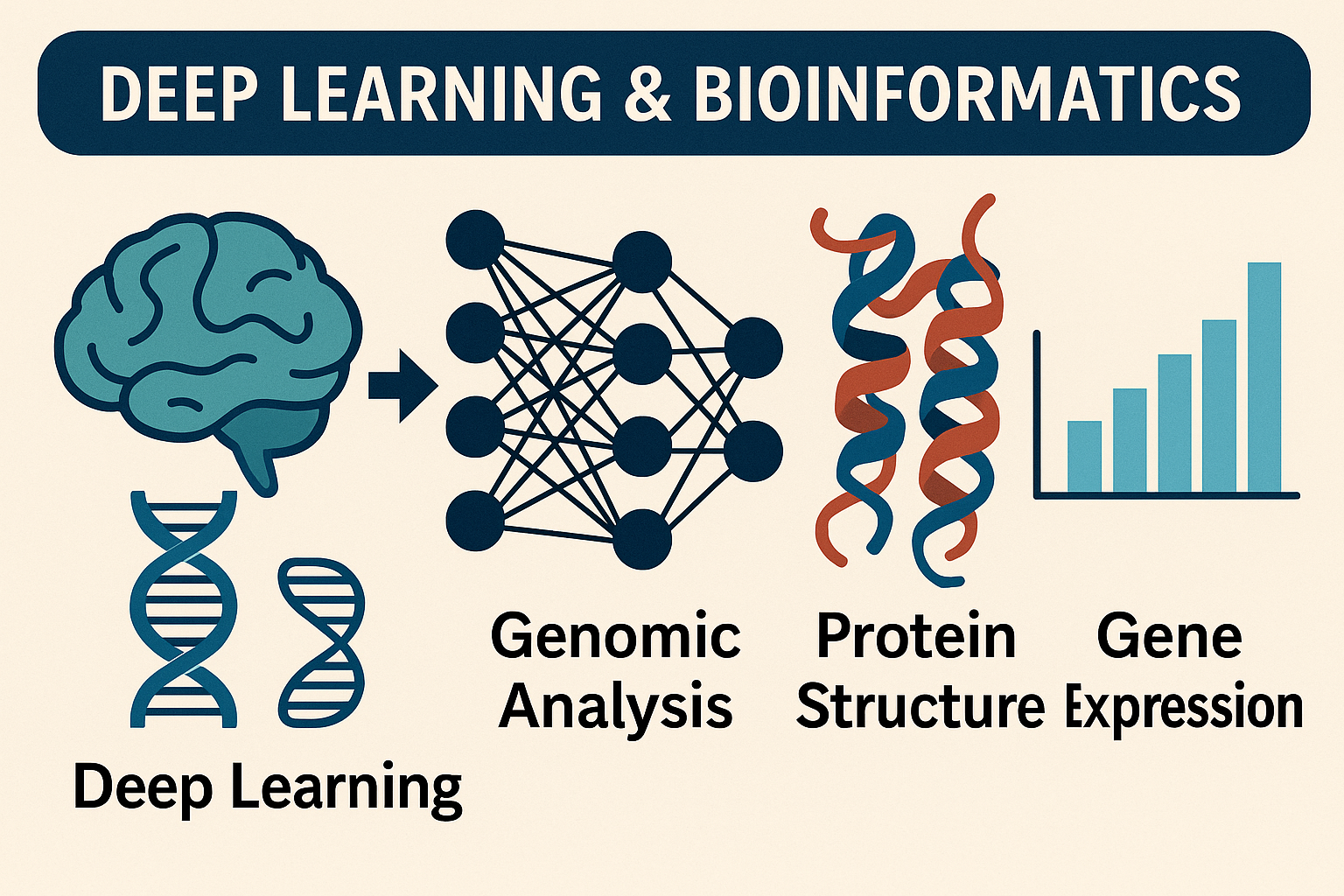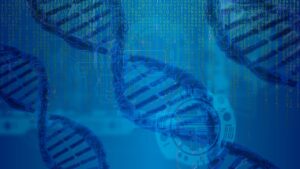In the era of big biological data, traditional analysis methods are often insufficient to capture the complex, nonlinear patterns hidden within genomic, transcriptomic, and proteomic datasets. This is where deep learning, a powerful subset of artificial intelligence (AI), is revolutionizing bioinformatics by enabling the accurate modeling and prediction of biological functions, structures, and interactions.
🧠 What Is Deep Learning?
Deep learning refers to the use of artificial neural networks — algorithms inspired by the human brain — to automatically learn features and patterns from data. Unlike traditional machine learning, deep learning can analyze unstructured data such as DNA sequences, protein structures, or high-dimensional gene expression matrices without needing manual feature extraction.
In bioinformatics, deep learning is rapidly gaining traction due to its ability to process massive volumes of biological data and uncover meaningful insights at a molecular level.
🔬 Applications in Bioinformatics
1. Protein Structure Prediction
One of the most exciting breakthroughs in computational biology came with AlphaFold by DeepMind, which used deep learning to predict protein 3D structures with unprecedented accuracy. This development highlights how deep learning can revolutionize structural bioinformatics — a domain traditionally dependent on costly and time-consuming experimental methods like X-ray crystallography and NMR spectroscopy.
With deep neural networks, researchers can now:
- Predict protein folding and 3D conformations.
- Identify active binding sites for drug design.
- Explore protein-protein and protein-ligand interactions.
2. Gene Expression Prediction
Understanding how genes are expressed in different conditions is vital for disease research and personalized medicine. Deep learning models can learn patterns from RNA-seq and microarray data to predict:
- Gene activation or repression under specific stimuli.
- Potential biomarkers for disease diagnosis.
- The impact of mutations on gene expression dynamics.
Models such as convolutional neural networks (CNNs) and recurrent neural networks (RNNs) are particularly effective in modeling temporal or spatial gene expression data.
3. Genomic Sequence Analysis
Deep learning can identify patterns in raw genomic sequences, enabling:
- Motif discovery (e.g. transcription factor binding sites).
- Enhancer/promoter region detection.
- Variant effect prediction (SNPs, insertions, deletions).
For instance, tools like DeepSEA and Basset apply convolutional architectures to learn functional DNA elements directly from sequence data.
⚙️ Challenges and Considerations
While deep learning is a transformative tool, it comes with challenges:
- Interpretability: Deep models often function as “black boxes,” making it hard to understand their internal logic.
- Data quality: Biological datasets often suffer from noise, missing values, or class imbalance.
- Computational cost: Training deep models requires significant hardware and expertise.
However, with careful dataset curation and hybrid approaches (e.g., combining deep learning with biological domain knowledge), these limitations can be mitigated.
🌱 Future Outlook
As biological data generation accelerates, from next-generation sequencing to single-cell omics, deep learning will become an indispensable part of bioinformatics pipelines. The integration of deep learning with multi-omics analysis, systems biology, and clinical data will open new frontiers in precision medicine, drug discovery, and synthetic biology.
At KonAnBio, we leverage state-of-the-art deep learning techniques to provide innovative solutions in structural prediction, gene regulation modeling, and large-scale data integration. Whether you’re a researcher, biotech startup, or pharmaceutical company, our bioinformatics expertise can accelerate your discoveries.
Interested in learning how deep learning can elevate your bioinformatics projects?
📩 Get in touch with the KonAnBio team today.



